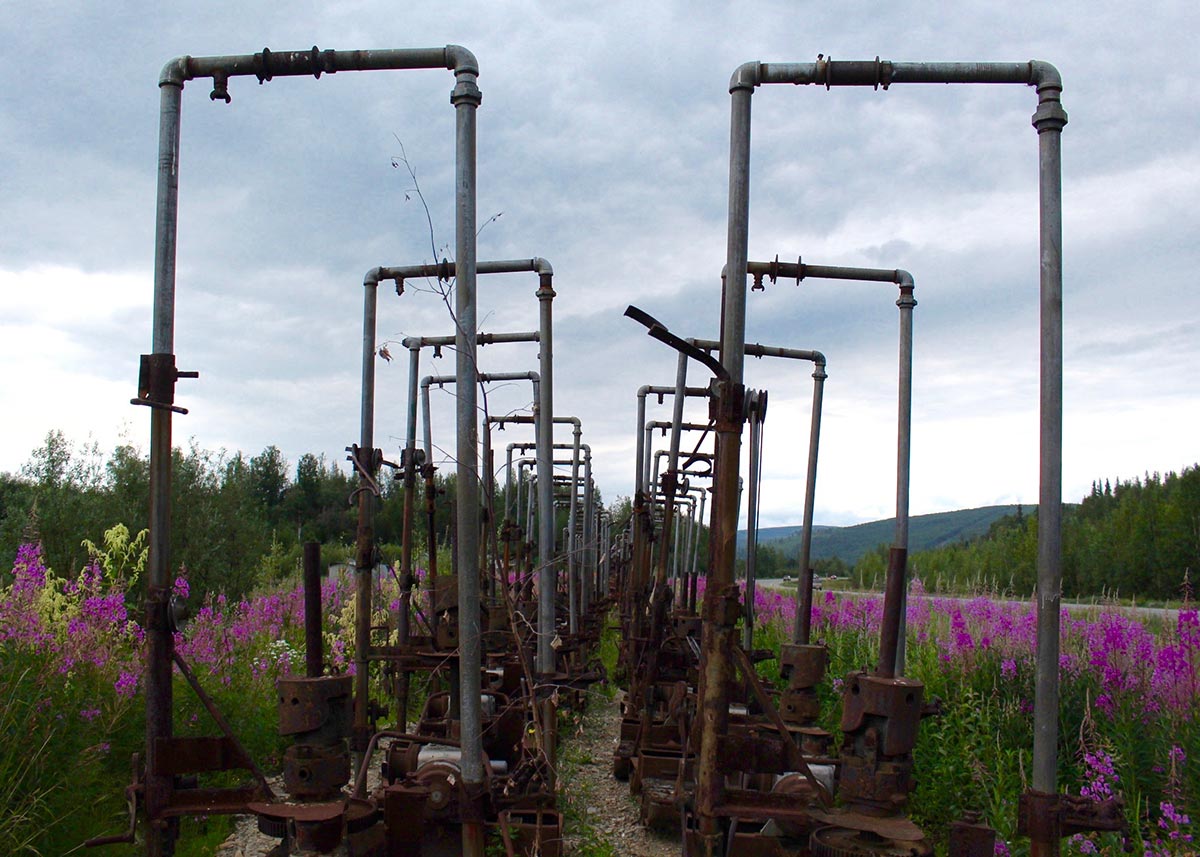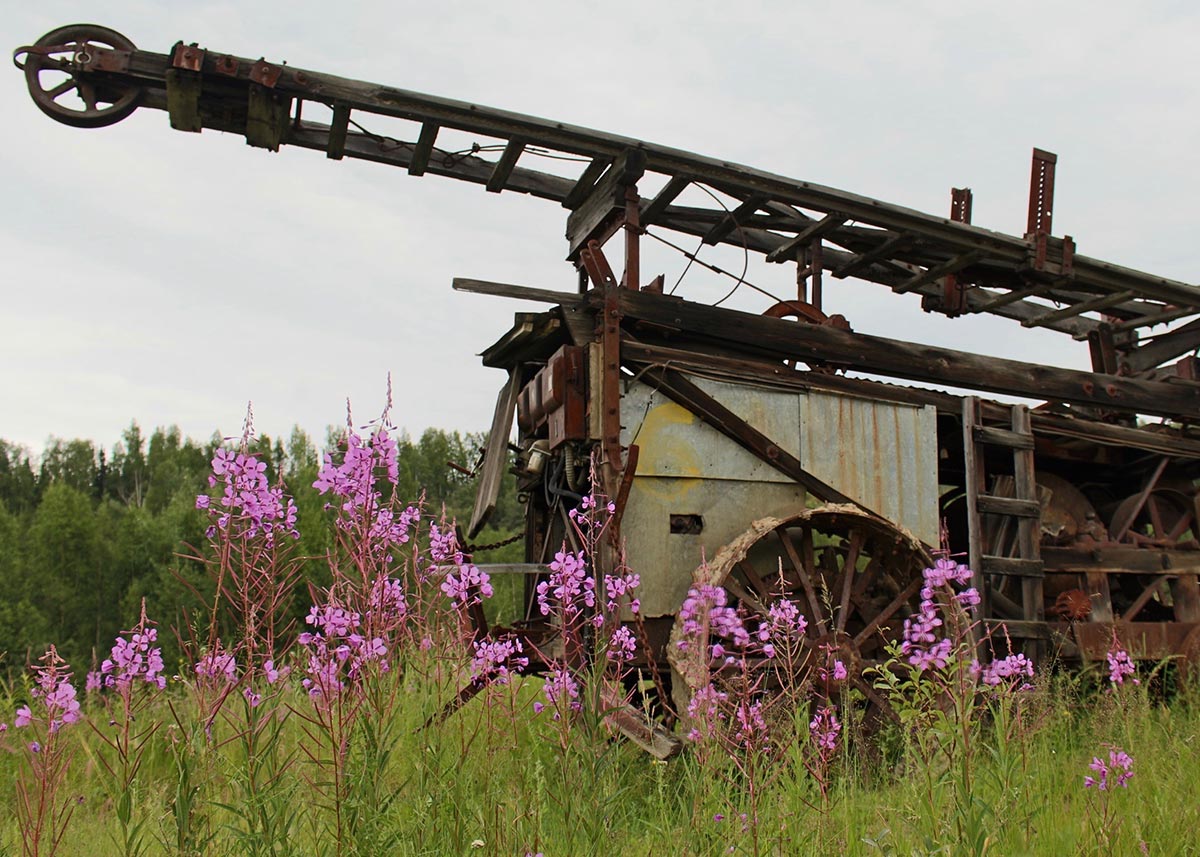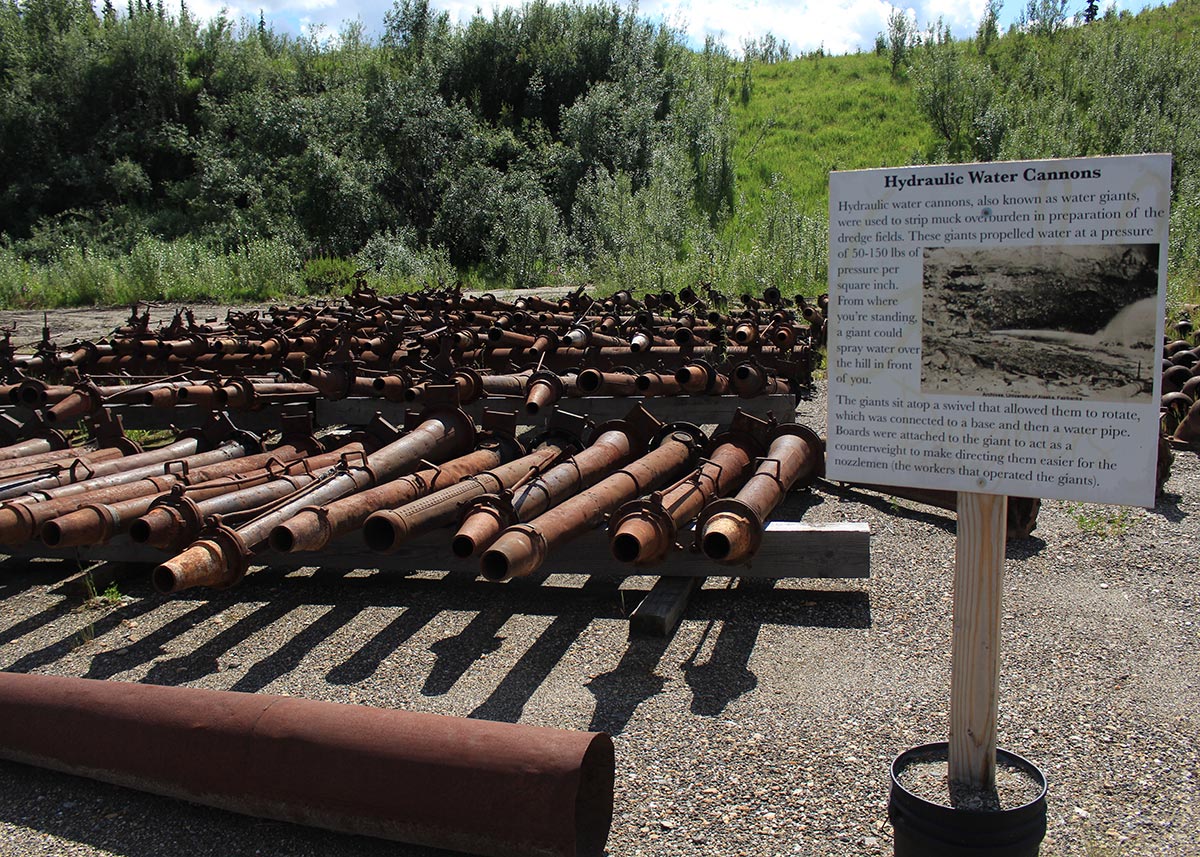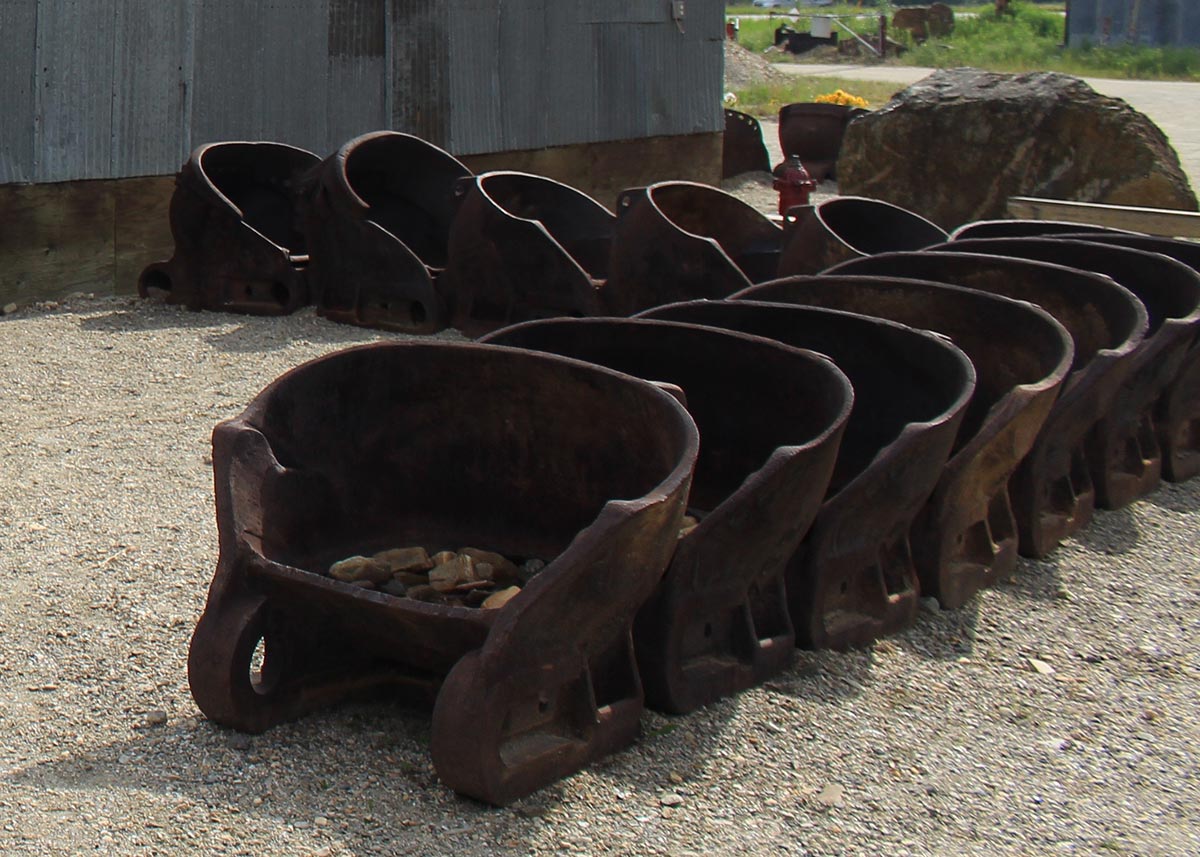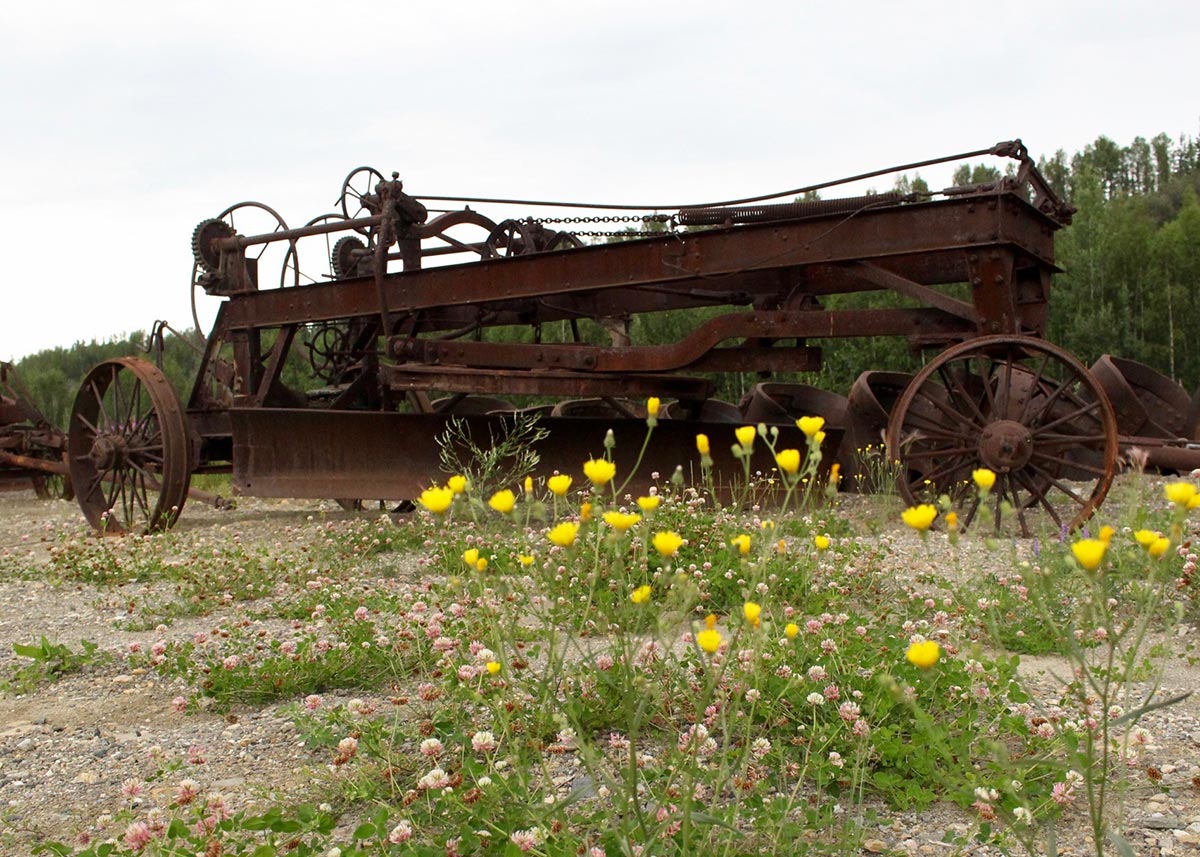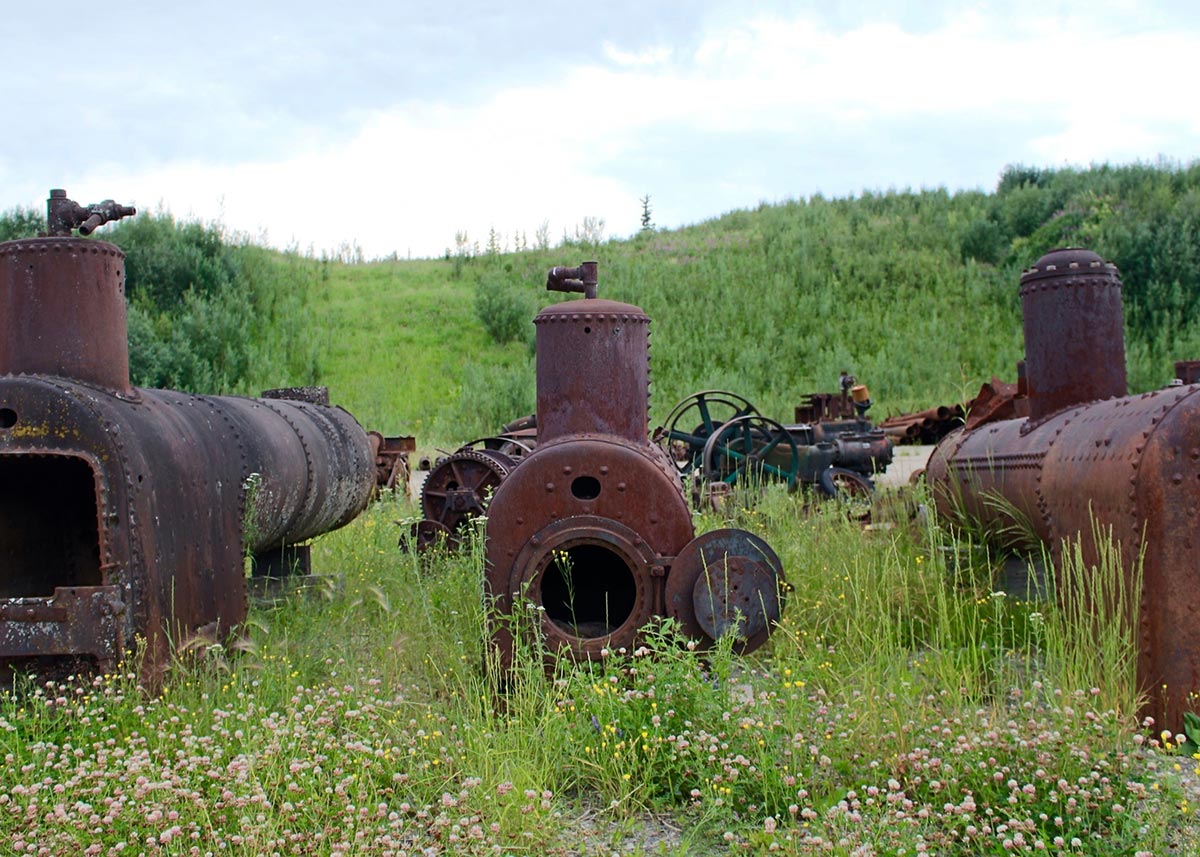The Alaska Gold Rush in Fairbanks
The gold rush came to the interior when Felix Pedro discovered gold in 1902. Pedro’s discovery of gold drew many prospectors to the area and led to the establishment of Fairbanks.
The gold rush in Alaska came to an end in 1911. The remaining gold was buried deep under the interior’s frozen surface. To recover the gold, the Earth’s surface had to be thawed, removed and washed through a wash plant. In order to achieve this, big money and even bigger equipment was necessary.
The Fairbanks Exploration Company brought both money and machinery to Fairbanks Alaska. In the 1920’s, gold dredges became the primary machine for mining gold. The dredges ruled the region for over 30 years and recovered 3.5 million ounces, ~$4.5 billion in today’s value.
Once the dredges shut down, the machinery was left behind. Many of these machines are now located at Gold Daughters in our unique Alaska museum.
Access to the Mining Museum is included with your admission to the park.
Local Mining – Past and Present
Both hardrock and placer gold mining occur in Fairbanks today.
Hardrock gold mining is the method that is used when gold is trapped inside a rock. The rocks must be crushed and blended with chemicals to extract the gold.
Placer mining occurs when gold has eroded out of its source rock. For placer mining, only gravity and water are required. Gold panning is used to recover placer gold.
Many people still make their living mining for gold in Fairbanks and the surrounding areas. It is an expensive and arduous way to make a profit, especially in Fairbanks where the summer is so short and miners have a small window to find gold. Mining involves high-stress, high-risk and the possibility of high-reward.
Fort Knox is an open pit hard rock gold mine that is located in the Fairbanks district. In 2011, they surpassed the 6 million ounce mark for gold recovery, making them the largest producer of gold in Alaska history. At $1200/troy ounce, that translates to $7.2 billion. Fort Knox is located 30 minutes north of Gold Daughters.
Pedro creek, where gold was discovered in 1902 and where Gold Daughters sources some of our paydirt. It s just 8 miles north of our location.
An Alaskan Hero and Miner
Leonhard Seppala was an instrumental employee for the Fairbanks Exploration Company during the dredging operations. His claim to fame (and hero status) occurred in 1925.
Seppala played a vital part in delivering serum to Nome, Alaska via dog sled in the well known “Serum Run” of 1925. Today, you may know of this run as the Iditarod Sled Dog Race. Many people credit the sled dog Balto and his owner Gunnar Kaasen because he ran the final leg of the delivery, but Seppala and his team covered the toughest part of the trail. Seppala traveled 84 miles with his sled team at temperatures reaching -85 degrees Fahrenheit!
After his mushing career, Seppala worked for the Fairbanks Exploration Company. His job was to patrol the Davidson Ditch on dog sled to ensure that water was available for the dredges.
The cabin he lived in while working for the F.E. Co is now at Gold Daughters.


